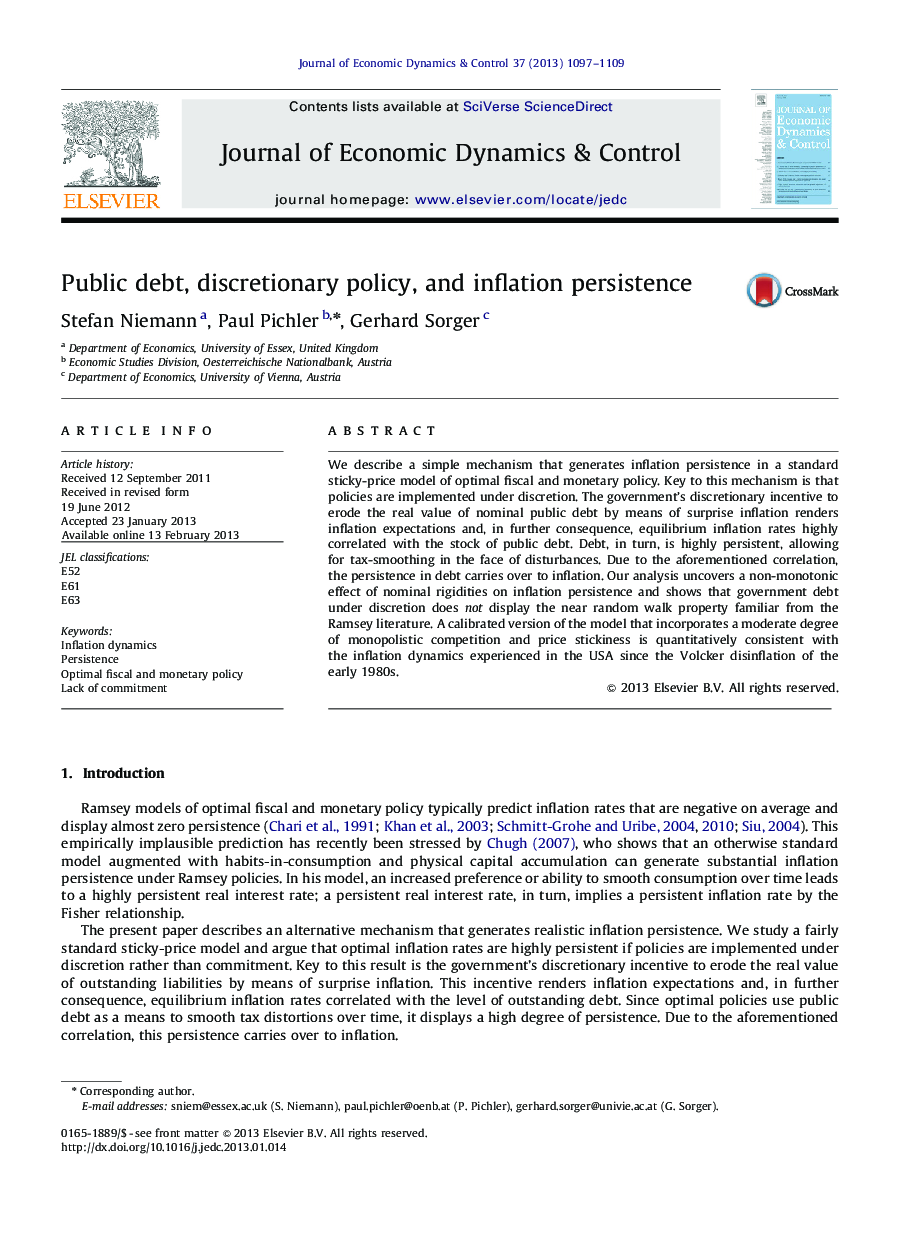| Article ID | Journal | Published Year | Pages | File Type |
|---|---|---|---|---|
| 5098690 | Journal of Economic Dynamics and Control | 2013 | 13 Pages |
Abstract
We describe a simple mechanism that generates inflation persistence in a standard sticky-price model of optimal fiscal and monetary policy. Key to this mechanism is that policies are implemented under discretion. The government's discretionary incentive to erode the real value of nominal public debt by means of surprise inflation renders inflation expectations and, in further consequence, equilibrium inflation rates highly correlated with the stock of public debt. Debt, in turn, is highly persistent, allowing for tax-smoothing in the face of disturbances. Due to the aforementioned correlation, the persistence in debt carries over to inflation. Our analysis uncovers a non-monotonic effect of nominal rigidities on inflation persistence and shows that government debt under discretion does not display the near random walk property familiar from the Ramsey literature. A calibrated version of the model that incorporates a moderate degree of monopolistic competition and price stickiness is quantitatively consistent with the inflation dynamics experienced in the USA since the Volcker disinflation of the early 1980s.
Related Topics
Physical Sciences and Engineering
Mathematics
Control and Optimization
Authors
Stefan Niemann, Paul Pichler, Gerhard Sorger,
